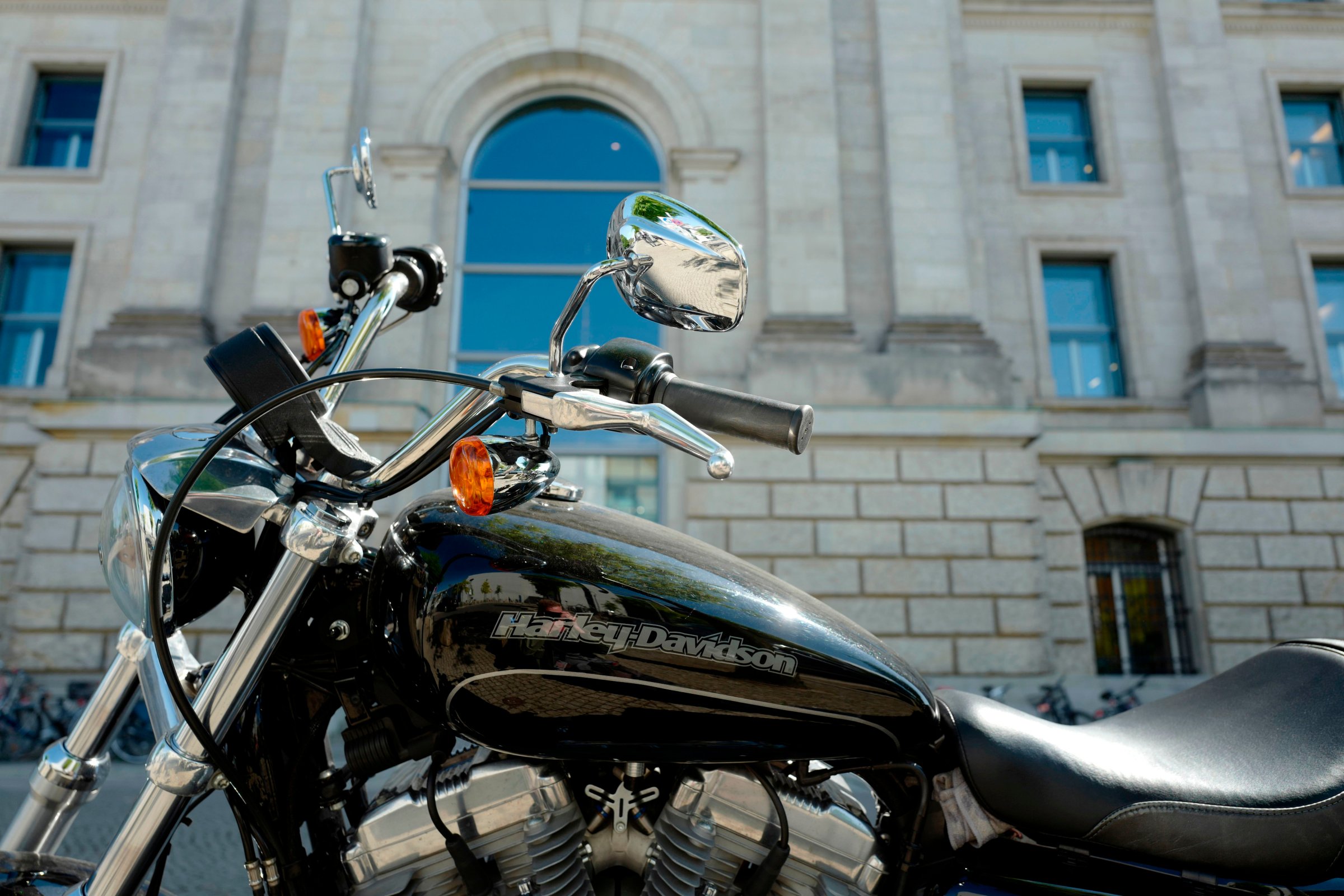
(Bloomberg) — Harley-Davidson Inc. cut its forecast for profit margin this year by an amount that suggests it’s finding a way to cope with the damage done by President Donald Trump’s trade war.
Harley sped up shipments to the European Union to blunt the impact of higher tariffs that the bloc enacted last month. As a result of the tariffs, operating margin this year will drop to about 9.5 percent, the midpoint of a range the Milwaukee-based manufacturer gave in a statement Tuesday, compared with a previous projection of about 10 percent. The squeeze wasn’t as severe as analysts had anticipated.
While the accelerated shipments reduced the cost of the levies to as much as $35 million this year, the annual impact may still run about $90 million to $100 million, Chief Executive Officer Matt Levatich said during a conference call with analysts. The European tariffs, enacted as retaliation for Trump’s taxes on steel and aluminum imports, forced the motorcycle company to make moves it had never considered before.
“We are doing everything we can as a company to absorb the costs that we can,” Chief Financial Officer John Olin said on the call. “We never contemplated moving our European volume out of the U.S. Consequently we’re analyzing the capacity options that we have, manufacturing costs, supply chain, logistics, in an effort to optimize it and to reduce and mitigate those tariffs.”
Harley shares rose 7.7 percent to close at $44.63 in New York, the biggest jump since October 2016. That pared the stock’s loss this year to 12 percent.
Adjusted profit for the second quarter was $1.52, beating analysts’ average estimate for $1.41. Revenue slipped to $1.53 billion, topping the average projection for $1.42 billion.
Trump’s Attack
Harley was caught in the crossfire of Trump’s trade war last month when it announced plans to shift some U.S. production overseas to sidestep higher tariffs imposed by the EU. The president attacked the iconic American company, claiming it was using the levies as an excuse to send jobs overseas. Harley had already announced plans to close a factory in Missouri and build a plant in Thailand.
The EU tariffs, which came in retaliation to Trump’s steel and aluminum levies, will cost about $2,200 per motorcycle shipped to Harley’s second-biggest market, the company estimated in a June 25 filing. The manufacturer hasn’t specified which of its overseas plants will begin producing bikes for European riders.
Harley is trying to navigate escalating trade tensions as sales in its core U.S. market continue to shrink. Bike deliveries in the U.S. sank 6.4 percent in the second quarter, the 14th decline out of the last 15 quarters. Worldwide sales fell 3.6 percent.
The EU enacted tariffs on Harley bikes and other U.S.-made products, such as blue jeans and Kentucky bourbon, on June 22, so it had a limited effect on second-quarter results. International sales increased 0.7 percent, driven by gains in Europe, the Middle East and Latin America.
Turnaround Plan
Levatich has struggled to attract younger consumers with premium motorcycles and has begun to release a series of cheaper bikes. He’s aiming to cultivate 2 million new U.S. riders by 2027 and for half of global revenue to come from outside the U.S. Harley will release more details about its turnaround strategy on July 30.
Harley’s forecast for motorcycle shipments this year was unchanged, and its moves to consolidate U.S. manufacturing are on track, which may help offset investor jitters about the tariff hit, Morgan Stanley analyst Adam Jonas wrote in a research note.
“While this may give pause to the pressure facing the stock, it’s unlikely to entice serious incremental capital,” he said.
More Must-Reads from TIME
- Donald Trump Is TIME's 2024 Person of the Year
- Why We Chose Trump as Person of the Year
- Is Intermittent Fasting Good or Bad for You?
- The 100 Must-Read Books of 2024
- The 20 Best Christmas TV Episodes
- Column: If Optimism Feels Ridiculous Now, Try Hope
- The Future of Climate Action Is Trade Policy
- Merle Bombardieri Is Helping People Make the Baby Decision
Contact us at letters@time.com